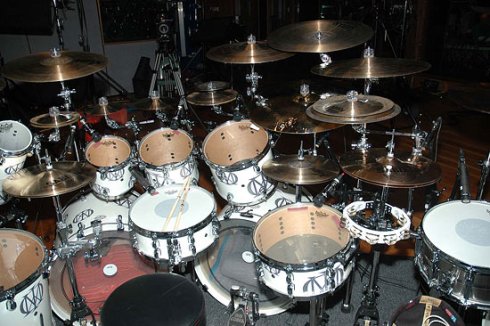You are currently browsing the category archive for the ‘Jack DeJohnette’ category.
Miles Davis Quintet
7/25/69
Antibes, France
This rad live Miles footage is from the rad transitional stage between the rad 60’s quintet and the rad 70’s fusion stuff.
Bitches Brew was recorded during this era, ushering in Miles’ departure from a swing feel. When Tony Williams left the band and was replaced by DeJohnette, the music took an almost immediate turn toward the fusion vibe that Miles held onto for the rest of his career. Not many recordings exist of Jack DeJohnette playing this brand of jazz with Miles. I’m super pumped to find this.
This concludes today’s jazz history lesson.
I listened to Keith Jarrett’s Tokyo ’96 album on the plane today, in honor of having just visited the city. GAAAAAHHHHH… it is so good. Even better than I remember, and I completely wore out that record in college. Every track is so moving. The record is on iTunes so go buy it immediately, and I think the dvd is available on Amazon if you look hard enough.
Taken from the dvd and posted on youtube just days ago is this gem…
You’ll want to watch this asap because I think Keith is pretty vigilant about his stuff not being on youtube. Jack’s playing on this track is a perfect example of a latin feel based on improvisation rather than committing to a particular pattern or rhythm. I’ve noticed that the larger drum world’s more dominant school of thought regarding latin playing is a very strict name and pattern approach, as if you’re not really playing latin unless you execute a cascara “this way” and not “that way”… and under no circumstances can you play a cascara with a rhumba clave… or whatever. PLEASE don’t pay attention to someone who talks that way. Music is not a study in systems or socio-cultural rules. Once again, it’s all about emotions, and Jack’s playing in the above video is DRIPPING with emotion.
There’s probably gonna be a lot of youtube videos in the blog post content this summer. I’ve got a bunch of traveling and other busy-ness happening, but that doesn’t make Jack DeJohnette any less inspiring…
When I was young I had a cymbal set-up with hats, 2 rides, 4 crashes, 2 splashes, a bell dome, and 2 chinas. I thought I was the bomb… and I had a ton of fun experimenting with all those different sounds. Now, however, I run hats with a ride and 1 crash… sometimes 2 if the situation requires it. I think the main difference is that over the last ten years I’ve been able to refine my understanding of the role of a cymbal.
The biggest issue is knowing when to NOT play. For instance, listen to “One Headlight” from the Wallflower’s first record Bringing Down The Horse. Notice anything? Matt Chamberlain doesn’t hit ANY crashes… or ride for that matter. It’s hats and hats only for the entire track… and the cool thing is that most people (even drummers) don’t notice the lack of crashes until someone else points it out. Just listening to that tune is a great lesson on knowing the role of a crash.
I started exploring this idea in high school when I would intentionally take parts of my kit away and try to play with the limited set-up that remained. Maybe just kick/snare/hats… or just kick/toms/ride… or whatever. I enjoyed the creativity that came from forcing myself to play a stripped-down kit… and I began to discover how many different sounds could be pulled from only one cymbal or drum.
Don’t get me wrong… I’m not trying to say that having a lot of cymbals is automatically bad. The only real problem with it is temptation. Honestly, how often does a bell dome REALLY fit in a song? Answer: not very often… maybe once in your band’s entire show. But for most drummers, simply having the bell dome set up on the kit makes you want to hit it. You’re trucking along on the tune and you notice the bell dome sitting there and you think “oh… I haven’t hit that in a while…” and then you force the issue and play it in a spot where it doesn’t belong.
Again, there’s nothing wrong with a bell dome. You just have to know when to show some restraint and NOT hit it. An example of this would be Jack DeJohnette in the Keith Jarrett Trio. His set-up is almost unforgivably excessive for a jazz context, but you would never know it from just listening. He’s not hitting anything that doesn’t need to be hit, and the discipline and musicality he shows in having all those cymbals and not hitting them is incredible. He just uses what he needs and it rules.
SUMMARY: Put as many cymbals in your set-up as you want… but prioritize knowing when to NOT play them.


Recent Comments